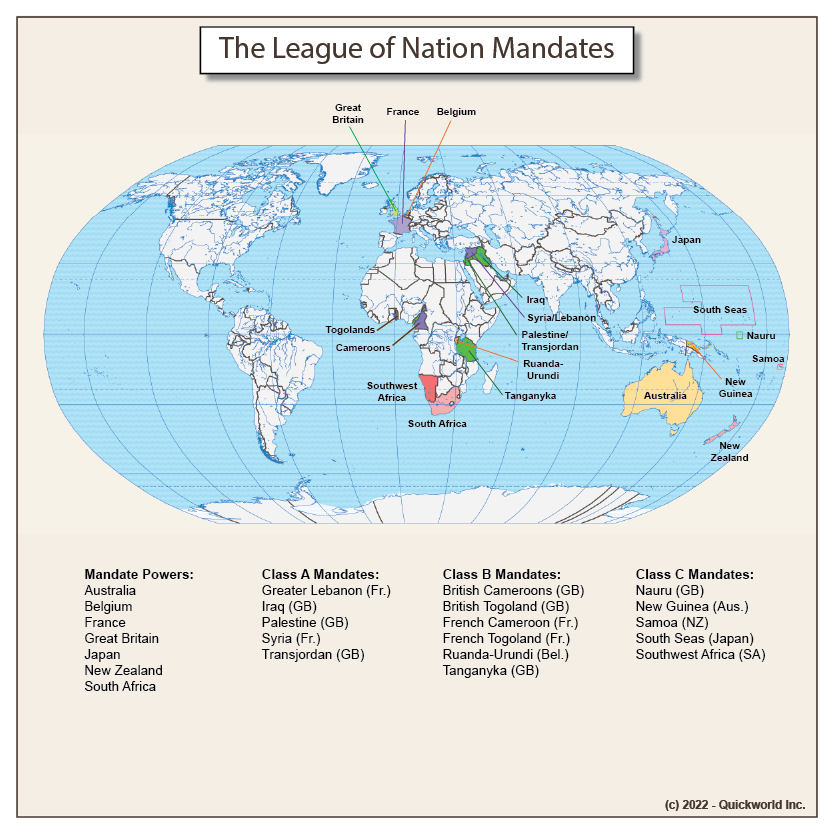Our Series on World War One focuses on the former territorial possessions of the losers of the War, Germany and the Ottoman Empire, that were granted the status of protectorates by the newly formed League of Nations.
The League granted some of the nations who won the war (Great Britain, France, Belgium, Australia, South Africa, New Zealand and Japan) the status of protector over several Mandates, with the goal of accompanying these territories towards full sovereignty over a period of time.
There were three classes of mandates: Class A Mandates were the former Arab possessions of the Ottoman Empire, which were divided between the British to the South (Iraq, Palestine and Transjordan) and the French to the North (Syria and Lebanon). Class B Mandates were the former African possessions of Germany. Southwest Africa was mandated to the Union of South Africa, Togo and Cameroon were split between Great Britain and France, and East Africa was split between Belgium and Great Britain. Class C Mandates were German island possessions in the Pacific Ocean.
All these ultimately reached independence, with minor exceptions. The Class A Mandates all reached independence by 1950 - the case of Israel/Palestine remaining conflictual to this day. World War II changed the paradigm for the other mandates, as the League of Nations was dissolved after the War. The new United Nations Organization renamed the Mandates as Trust Territories and helped them reach full sovereignty. Japanese Mandates were entrusted to the United States.
As of 2022, all former Mandates have reached sovereignty with the exception of the Commonwealth of the Northern Marianas, which is still under American jurisdiction. Some, like British Togoland and parts of the British Cameroons were merged with other former British colonies to create the countries of Ghana and Nigeria. Namibia, the former South African Mandate, was the last place in Africa to reach independence in 1990.
The League of Nation Mandates


